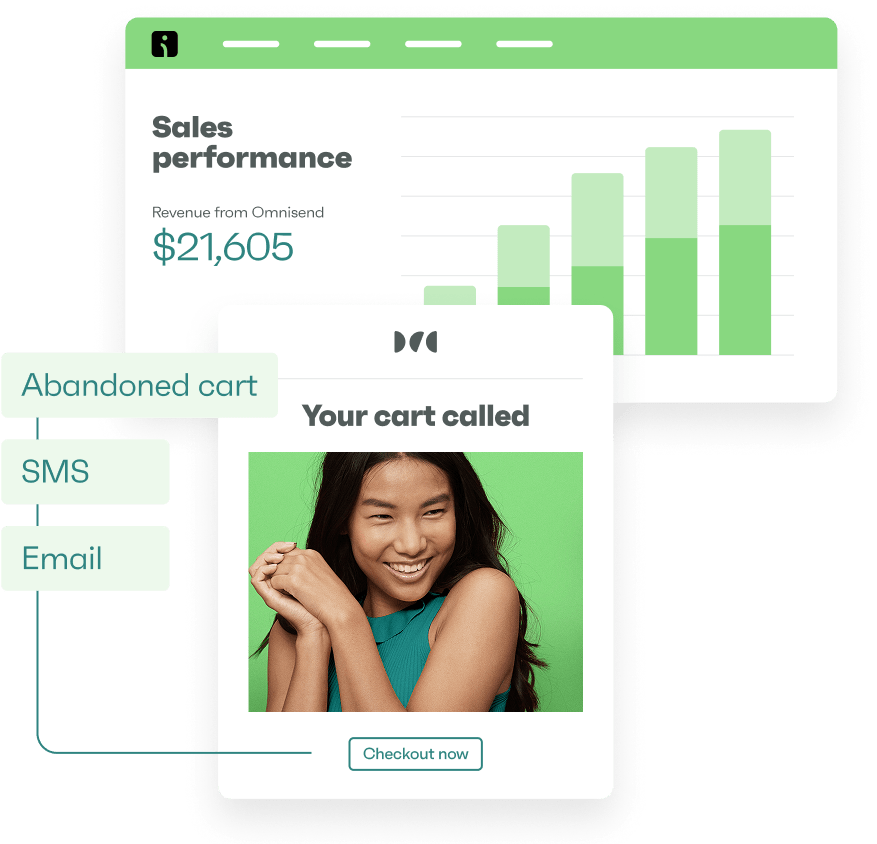Drive sales on autopilot with ecommerce-focused features
See FeaturesStarting an ecommerce business today is easier than ever. But what if you started over a decade ago, with no money, no experience, and definitely no YouTube tutorials to help you out?
We talked with John Santos, the founder of Street Crafter and Santos Studios. He got his start during the 2008 recession, driven by a childhood love of inventing things and a big idea for a customizable backpack. John shared with us his thoughts on entrepreneurship, the power of community, the role of email marketing, and how to balance business with personal well-being.
The start of an idea
John’s entrepreneurial spark hit early. At six, while visiting family in Mexico, he watched local farmers go door-to-door to sell goods because there were no nearby stores. That moment stuck with him. It made him realize that someone creates and delivers every product. He began sketching his own inventions from then on.
Growing up with five people in a one-bedroom home — sometimes even sleeping in a closet — shaped John’s resilience and drive. In high school, he flipped items for profit, selling candy and essentials to classmates, keeping his entrepreneurial instincts sharp.
Entrepreneurship before it was cool
In 2008, John was 19 and saw an opportunity. At the time, entrepreneurship wasn’t trendy — it was often seen as a backup plan if you didn’t have a clear career path. Resources were limited, and most advice pointed toward getting a degree first.
But John had an idea for a modular backpack. With no experience and no YouTube tutorials to guide him, he turned to Google and started visiting factories to learn the ropes. He briefly considered business school, but a professor encouraged him to launch instead — and that push made all the difference. Today, he credits YouTube and social media for offering the kind of support that was hard to find back then.
The $20k leap
John was juggling full-time work to pay for school and had no savings to fund his idea. With help from a supportive professor, he put together a business plan — but it required $20k, more than he earned in a year.
When he applied for a business loan, the bank turned him down — no credit history, no degree, no track record. But a tip from a car dealership led him to try a personal loan instead. He went back to the same bank, asked for $20k — and got it, based solely on his personal credit.
Most of the money went fast — $3,5k on a basic (and not mobile-friendly) website, $8k on materials, another $8k on manufacturing. That left very little for marketing.
Launching was anything but smooth. What worked on paper often broke down in production. John quickly learned that entrepreneurship is a constant test of problem-solving, grit, and endurance — it’s not for the faint of heart.
Ecommerce then vs. now
Back in 2009, breaking into ecommerce wasn’t easy — you needed capital, connections, and a lot of trial and error. But if you managed to get in, there was less competition and more room to grow.
Today, platforms like Shopify have lowered the barrier to entry — launching a store is easier than ever. But that also means the market is crowded. Copycat brands can appear overnight, and giants like Shein and Temu are quick to replicate trending designs, making it harder to stay ahead.
In this environment, branding and marketing do the heavy lifting. It became all about building a brand people want to root for.
Modern marketing
Marketing has changed. Content creation used to be a free-for-all — now it follows patterns, algorithms, and unspoken rules. That structure has created saturation.
Today’s best strategy is to connect authentically and repeat your message often. AI makes it easier (and cheaper) to produce content, which is a gift to small brands — but also floods the market. The brands that win will have a clear message, consistent identity, and a product that actually delivers.
John breaks down key platforms:
- Instagram and TikTok are trendy and fast-moving — great for early traction
- TikTok offers big growth but comes with high-risk
- YouTube is his favorite because it builds community and rewards long-term content
- Instagram mostly follows trends and rewards visual polish
To stay ahead, John uses AI tools like Spotter Studio (for video ideas) and View Stats (for thumbnails). For writing, he leans on ChatGPT and Collad — not to write from scratch, but to refine ideas, improve phrasing, or brainstorm directions.
His core advice — build a community first. It gives you real-time feedback, strengthens loyalty, and makes your ideas harder to copy. And if you genuinely love your niche, staying ahead of trends will come naturally.
Email marketing: Build real relationships
Social media is loud — email is personal.
John started building his email list in 2018. Today, he has nearly 80k subscribers and an open rate of around 30%. People still mention his emails years after signing up — proof that when done right, email builds lasting trust.
To him, a subscriber is more than just a number — it’s someone raising their hand, showing intent, almost like making a friend. The goal is to nurture that relationship over time.
His strategy is simple: mix value with promotion. For Street Crafter, that means sending monthly how-to emails with printing tips alongside occasional limited-time offers. He avoids blasting out promos alone — they don’t perform. Value-first wins trust, and trust drives sales.
Email is powerful even before launch. You can invite people to subscribe early and follow your journey. That builds attachment and momentum, plus it helps your deliverability. With Google’s recent updates, open rates matter more than ever.
John also sends promo emails around big events like Black Friday, but with B2B buyers, timing is everything. He sends those at least a month in advance so customers can prepare their own campaigns.
Pivot and push forward
The brand began with rave-ready backpacks — bold designs built for the festival scene. But they hit a ceiling. So, they pivoted to streetwear, opting for premium fabrics and higher price points. It felt more aligned with their vision — and had stronger market potential.
With funds running low, they kept things scrappy. John’s brother learned CAD and how to sew so they could handle more in-house.
Their big break nearly came at a trade show. They built a full 16-piece collection and pitched it to names like Wiz Khalifa and Monster Headphones. John quit his job, betting everything on that moment. But the deal fell through.
It was a gut punch. Then, John’s girlfriend — now his wife — suggested turning the experience into a YouTube video. That video, “Starting a clothing brand with $50,” went viral and kickstarted his content career.
The highs, the lows — all of it taught John to love the process. For him, the win is in moving forward.
He also learned the hard way that hustle isn’t everything. For years, he went all-in and burned out. Now, he sticks to a routine that actually sustains him: early mornings, workouts, cold plunges, family time, and focused work hours. Balance is part of the plan now.
Street Crafter: Create at home
Street Crafter launched in 2023 to solve a clear problem. DTF (direct-to-film) printing machines produce high-quality transfers — but the machines themselves are expensive and out of reach for most small creators.
Street Crafter flipped the model. Instead of selling the machines, they sell the transfers. All you need are scissors and an iron — no fancy equipment required. It gives you the look and feel of cut-and-sew with the simplicity of print-on-demand.
As a result, you get professional-quality custom apparel you can create at home. A total game-changer.
Final advice: Make space to think
John’s parting advice: make space for quiet. Put your phone down. Let your mind wander. Whether you’re driving, eating, or just standing in the shower, that stillness gives your brain the space to untangle problems and spark new ideas.
His story is proof of how much the business world has changed — and how much hasn’t. Tools evolve, trends shift, but the fundamentals stay the same: community, creativity, and consistent connection still win.
Build real relationships. Protect your balance. And keep moving forward.
TABLE OF CONTENTS
TABLE OF CONTENTS


No fluff, no spam, no corporate filler. Just a friendly letter, twice a month.

 OFFER
OFFER







